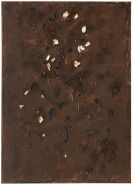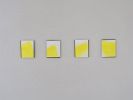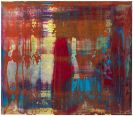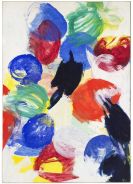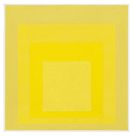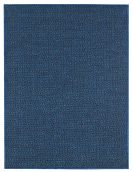
Fritz Wotruba
Wien
1907 -
Wien
1975
Fritz Wotruba was born in Vienna on 23 April 1907 and trained initially as a die engraver. Between 1926 and 1929 he studied sculpture under Anton Hanak and Eugen Steinhof at the Vienna School for the Decorative and Applied Arts. Wotruba began to work in stone, producing his first limestone torso of a man in 1928.
By 1931 he had had his first successful exhibition at the Folkwang Museum in Essen. Until 1938 he showed work in Austria, Germany, France and Switzerland. From 1932 Fritz Wotruba was a regular contributor to the Venice Biennale. During the 1930s his friends in Vienna included the writer Robert Musil, the painters Herbert Boeckl and Josef Dobrowsky and the composer Alban Berg.
In 1933 Fritz Wotruba and his wife moved to Switzerland for seven months for political and financial reasons before leaving Vienna in 1938 to remain at Zug, Switzerland, until 1945. Friends made it possible for Wotruba to continue his work there and his sculpture was shown at numerous exhibitions mounted by Swiss museums.
While in exile, Fritz Wotruba met Marino Marini, Germaine Richier and Uli and Dana Becher. In 1945 Wotruba returned to Vienna, where he was given a post at the Vienna Art Academy on Boeckl's recommendation. There Fritz Wotruba taught a master class in sculpture for the rest of his life. Wotruba's "Großer Stehender" ["Large Standing Man"] marks his emancipation from anatomical configuration; thenceforward structural and tectonic considerations would govern his work. While staying in Rome and Paris in 1947, Wotruba met Giacometti, Magnelli and Zadkine, et al, also making friends with the art dealer and publisher Daniel-Henri Kahnweiler.
In the years that followed, Fritz Wotruba received international recognition, had solo shows at important museums and galleries throughout Europe and the US and contributed regularly to important international group shows. In 1953-54 Wotruba produced his first column figures. During the 1960s Wotruba worked for the theatre, designing costumes, masks and stage-sets for the "Burgtheater" in Vienna, the Salzburg "Felsenreitschule" and the production of the Wagnerian "Ring of the Nibelungs" at the Deutsche Oper in Berlin.
In 1971 Wotruba was commissioned to plan the "Church of the Holy Trinity" in Vienna-Mauer, which was consecrated in 1976. By the time Fritz Wotruba died in Vienna on 28 August 1975, he was universally acclaimed as one of the greatest sculptors of the 20th century.
Would you like to sell a work by Fritz Wotruba?
Infos for seller
